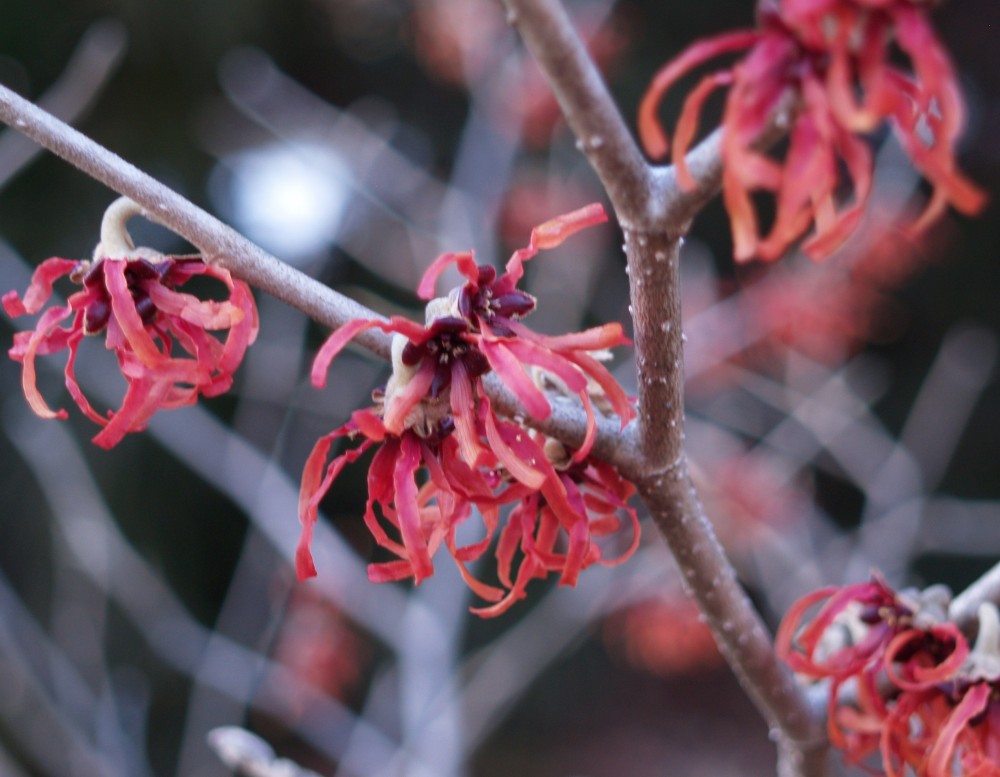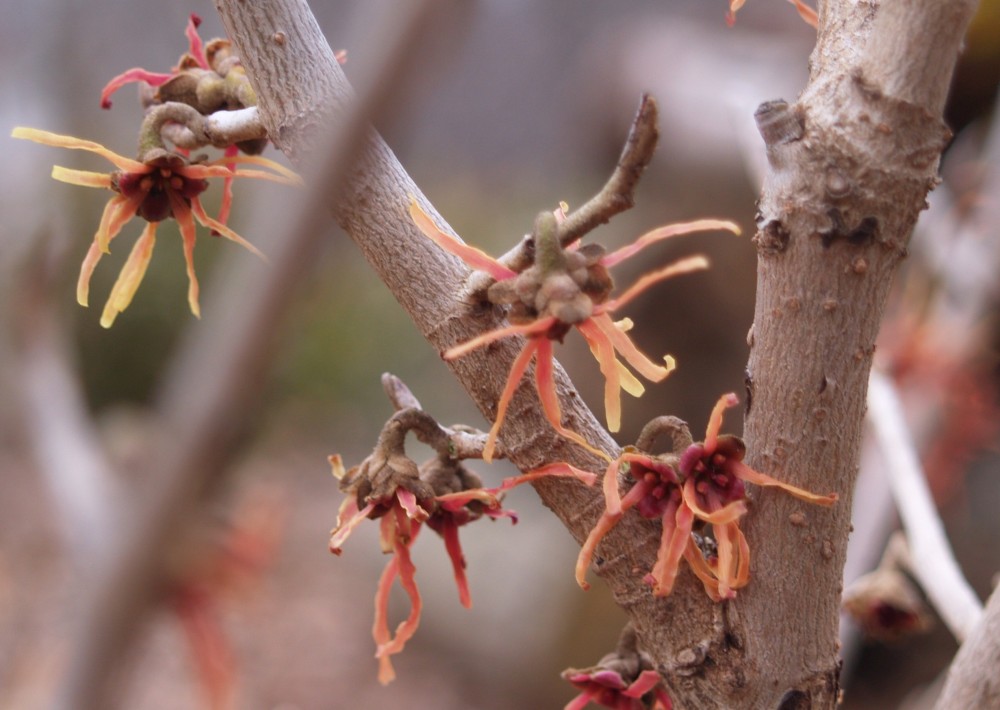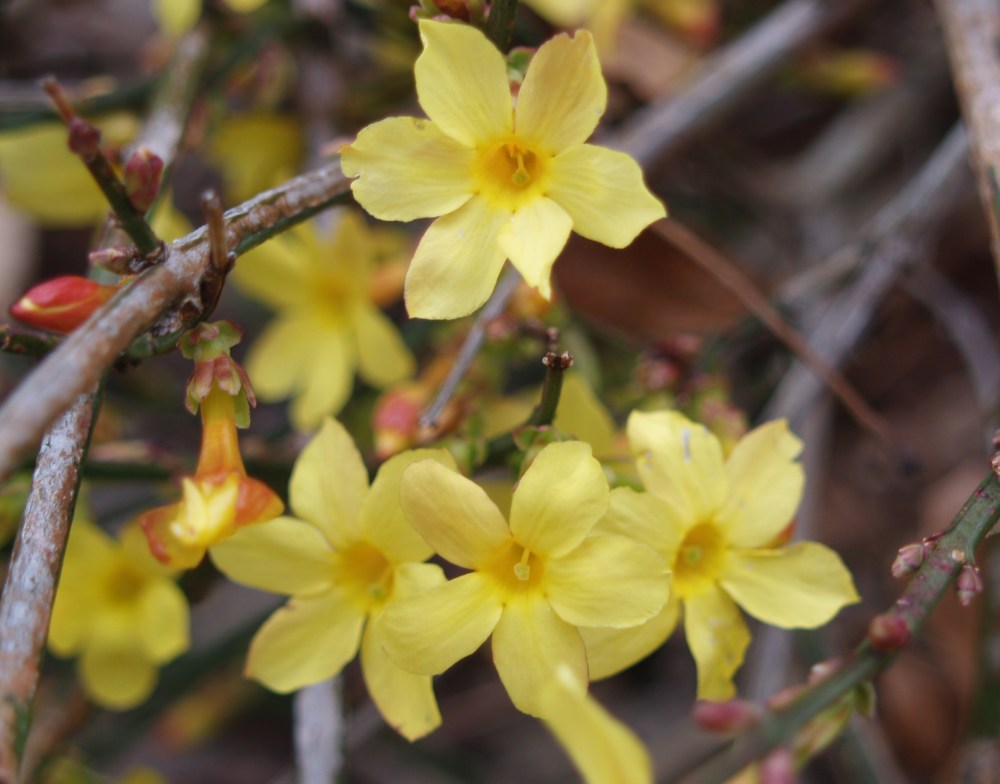More than a few times this winter, enthusiasm has been quashed by another spell of extreme cold or more inches of snow. As soon as buds of hellebores show signs that flowering is imminent, they are buried for another week under six inches of snow.
Finally, ‘Diane’ (above) and ‘Jelena’ (below) witch hazels (Hamamelis x intermedia) that are weeks overdue have begun to flower. These tall shrubs stand well above the snow, and on the warm afternoon before the most recent storm the scent from the witch hazels was unmistakable. With this prolonged cold, the nearby vernal witch hazel (Hamamelis vernalis) remains in flower so that the fragrance in the lower garden is delightful.
The yellow flowered witch hazel ‘Arnold Promise’ remains in tight bud, though there is a barely perceptible swelling that encourages that this long established shrub has not perished in a spot that has become persistently damp. I have feared much worse due to waterlogged roots, but it appears there will be a temporary reprieve while these matters are sorted out. By nature, witch hazel will not tolerate wet feet, so if this area does not dry out on its own I will be forced to attempt to redirect the course of a natural spring that flows past.
Again, after considerable delay the Winter jasmine (Jasminum nudiflorum, above) has begun to bloom. I recall stating weeks earlier that the yellow flowered jasmine was tardy in flowering, but certainly it will bloom before the end of January. Perhaps I insisted that the jasmine would flower by mid January, I don’t recall, but in either case it is foolish to make such statements. By April, or May, it is relatively safe to predict that some flower or another will appear within, say a three week period, give or take a week, or so. But, in winter these matters are less predictable, so all who make such generalized statements should be forewarned.
As the recent storm approached I spent a few additional minutes stooping to inspect buds of paperbushes and spireas that should be flowering in the next few weeks. The paperbush (Edgeworthia chrysantha, above) often flowers late in February, and usually by early March. Much of the joy of winter is spent checking and checking again for signs of the yellow tipped flowers that become evident shortly after the new year. Except this year.
Since the paperbushes were planted six or eight years ago only once have temperatures dipped to zero, and at the time there was an immediate and noticeable loss of flower buds. The plants recovered without any apparent trauma, but with only a few flowers, and they appear destined for the same fate this spring. Buds on lower branches of the massive shrubs are less effected, and I’ll be overjoyed by any flowers that survive the cold.
As I trudged through the mud, it was comforting to examine swelling leaf buds for deutzias and the early spring flowering ‘Ogon’ spirea (Spirea thunbergii ‘Ogon’, above) that insisted spring was closer than seemed possible as storm clouds loomed on the horizon. Once it has flowered and into leaf, I have mixed feelings about this narrow, yellow leafed spirea that has recently been given a more market worthy trade name (Mellow Yellow). The early, tiny white blooms are nice, and greatly appreciated while little else is flowering, but the form of the shrub is coarse. To maintain any semblance of compact form it must be shaped annually after flowering, and then probably a time or two through the year. Of course, no regular pruning is done in this garden, so the shrubs will again be unruly masses of pleasant yellow foliage.
Thanks for the great ideas of varieties to plant for much appreciated late winter bloom.